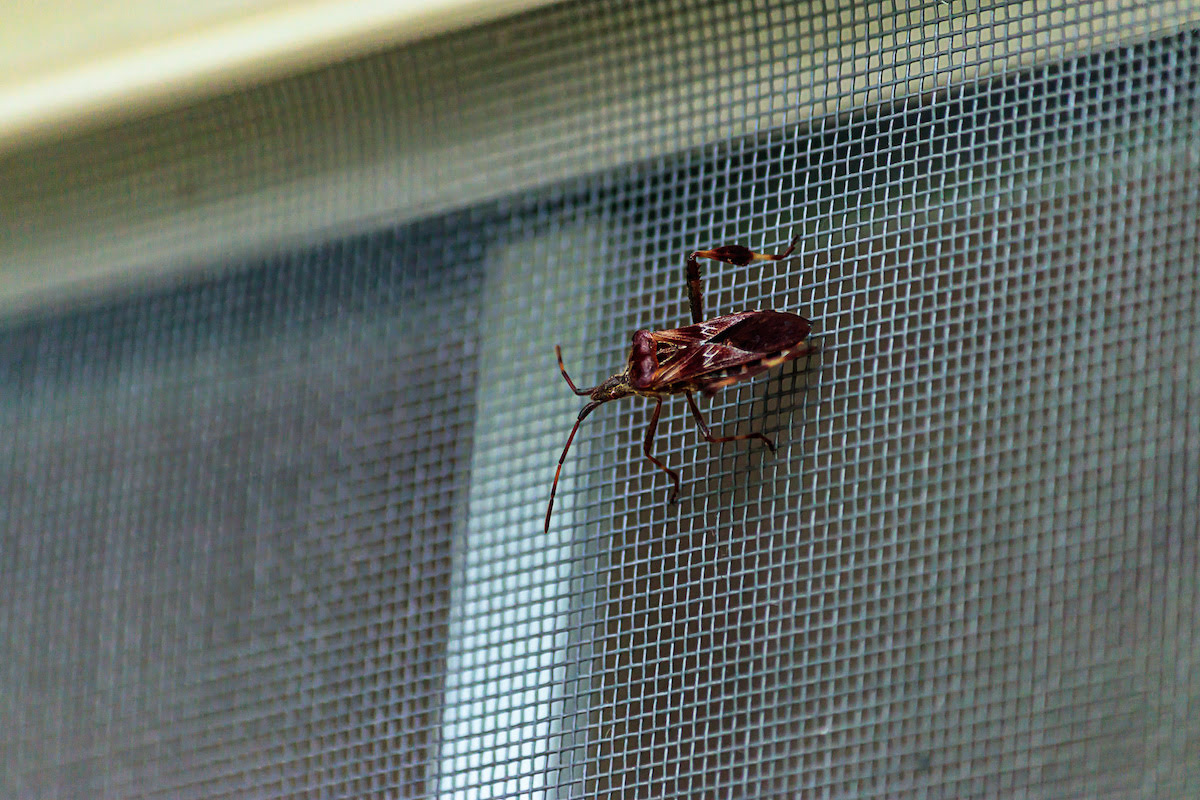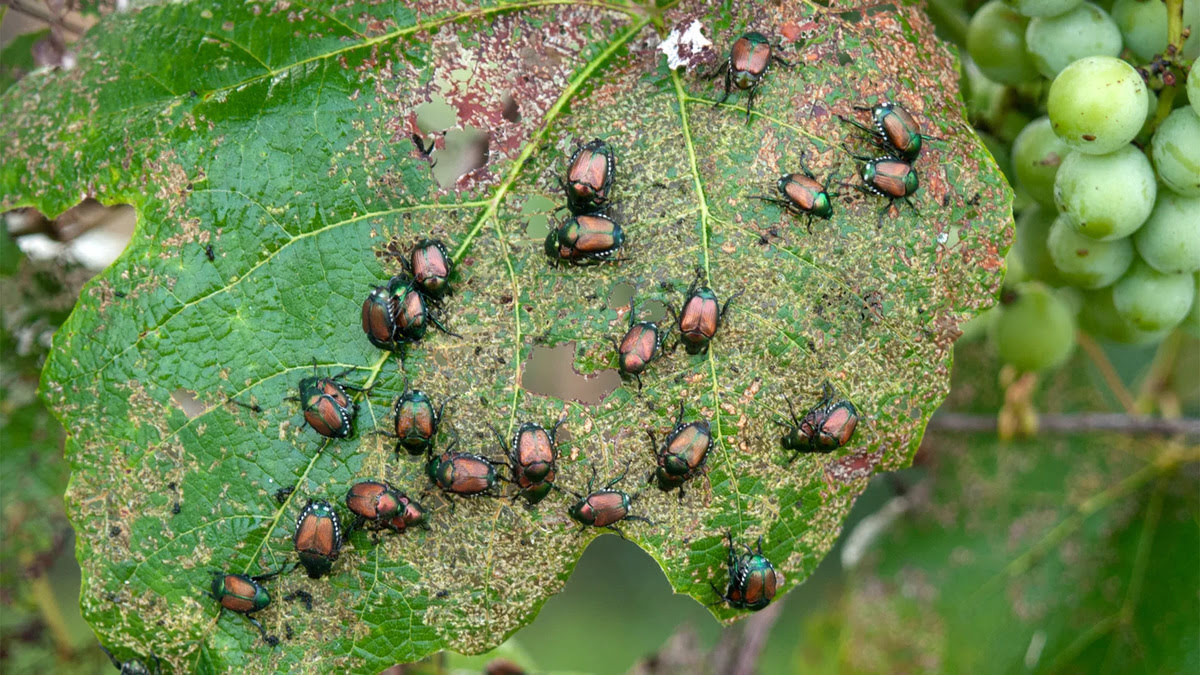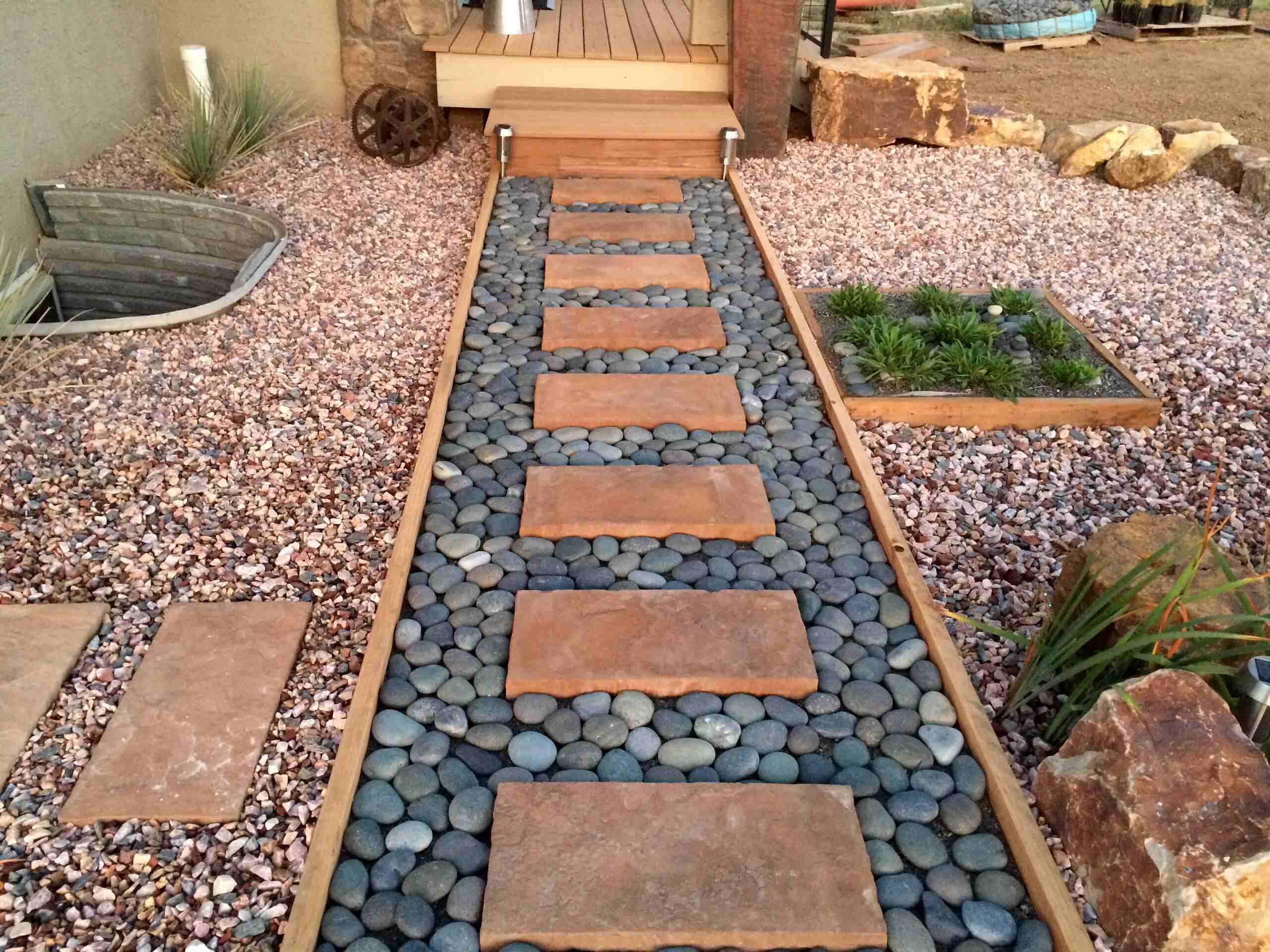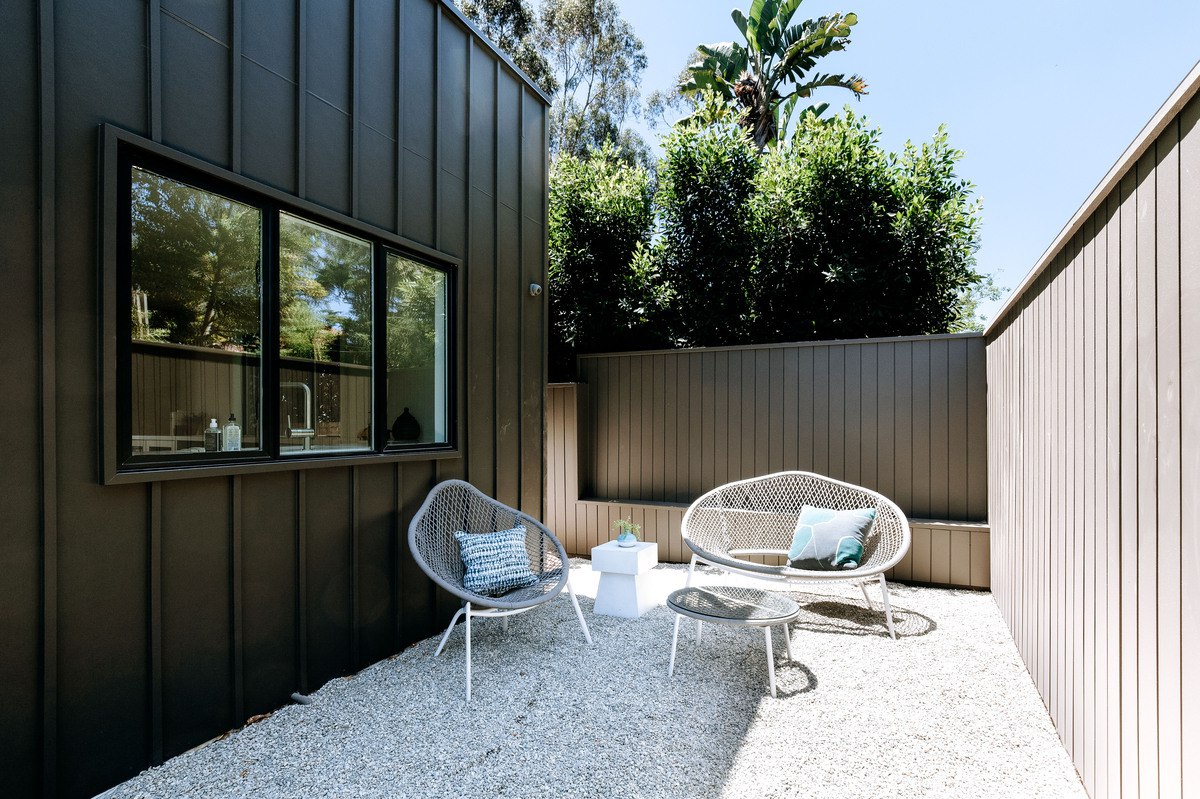Home>Gardening Tips and Tricks>Problem Solving>How To Prevent Weeds In Gravel


Problem Solving
How To Prevent Weeds In Gravel
Modified: January 22, 2024
Learn effective ways to prevent weeds in gravel and keep your outdoor space looking pristine. Problem-solving tips and techniques to tackle weed growth.
(Many of the links in this article redirect to a specific reviewed product. Your purchase of these products through affiliate links helps to generate commission for Chicagolandgardening.com, at no extra cost. Learn more)
Table of Contents
Introduction
Weeds can be a nuisance in any outdoor space, and gravel areas are no exception. Not only do weeds detract from the aesthetic appeal of a gravel surface, but they can also cause damage and make maintenance more challenging. If left unchecked, weeds can grow through the gravel, disrupt the stability of the surface, and create an unsightly mess.
To maintain a clean and weed-free gravel area, it’s important to take preventive measures. By implementing the right strategies, you can save yourself time and effort in the long run, as well as preserve the appearance and functionality of your gravel surface.
In this article, we will explore effective methods to prevent weeds in gravel. From selecting the right gravel to installing weed barriers and considering natural weed control methods, we’ll cover the best practices to keep your gravel area free from unwanted vegetation. Whether you have a gravel driveway, garden path, or patio, these tips will help you maintain a weed-free surface that stays in pristine condition.
Read on to discover how to keep those pesky weeds at bay and enjoy a beautifully maintained gravel area for years to come.
Understanding the Role of Weeds in Gravel
Weeds play a significant role in the gravel area, and understanding their behavior can help you take effective preventive measures. Weeds are opportunistic plants that thrive in various conditions, including gravel surfaces. They have a remarkable ability to adapt and spread quickly, making them a constant threat to the cleanliness and integrity of your gravel area.
One of the primary reasons weeds appear in gravel is due to the presence of organic matter. Over time, leaves, twigs, and other debris can accumulate on the gravel surface, providing a fertile ground for weed seeds to germinate. Additionally, wind and animals can transport weed seeds onto the gravel, further contributing to their growth.
Another factor that encourages weed growth in gravel is the availability of moisture. Gravel surfaces tend to retain water, allowing weeds to find sufficient moisture for their survival and growth. Inadequate drainage or improper grading can exacerbate this issue, creating the ideal environment for weeds to flourish.
Furthermore, the nature of gravel itself can contribute to weed growth. Fine-grain gravel provides a suitable habitat for seeds to settle and establish root systems. As weeds take root and grow, their roots can penetrate the gravel, compromising the stability of the surface and causing potential damage.
It’s important to note that certain weed species are more common in gravel areas than others. Some of the most persistent weeds found in gravel surfaces include dandelions, crabgrass, and chickweed. These weeds have aggressive growth patterns and can quickly take over if not dealt with promptly.
By understanding the factors that contribute to weed growth in gravel, you can begin to implement effective strategies to prevent and control their presence. In the following sections, we will explore different methods to tackle weeds in gravel and keep your outdoor space looking its best.
Choosing the Right Gravel
The first step in preventing weeds in a gravel area starts with choosing the right type of gravel. Not all gravel is created equal, and selecting the appropriate material can make a significant difference in weed prevention and overall maintenance.
When considering the type of gravel, opt for crushed stone or angular gravel instead of rounded pebbles. Crushed stone has a rough texture, making it more difficult for weed seeds to settle and establish roots. On the other hand, rounded pebbles can provide a stable base for weed seeds to take hold.
Additionally, consider the size of the gravel particles. Smaller-sized gravel, such as pea gravel, has a smoother surface and can allow weed seeds to lodge in between the particles more easily. Larger-sized gravel with irregular shapes creates a less hospitable environment for weeds.
It’s also beneficial to choose gravel that is free from organic matter. Organic matter, such as decomposed leaves or wood chips, can provide nutrients for weed growth. Ensure that the gravel you select is clean and does not contain any organic debris that could contribute to weed proliferation.
Furthermore, consider using geotextile fabric as a layer between the underlying soil and the gravel. Geotextile fabric acts as a barrier, preventing weed seeds from germinating and penetrating through the gravel surface. It also helps with drainage and stabilizes the gravel area.
By choosing the right type and size of gravel, as well as incorporating geotextile fabric, you can create an inhospitable environment for weeds and make it easier to maintain a weed-free gravel area.
Preparing the Gravel Area
Before laying down the gravel, it’s essential to properly prepare the area to minimize weed growth and ensure the longevity of the surface. Taking the time to prepare the gravel area will pay off in the long run by reducing maintenance and preventing weeds from taking hold.
The first step in preparing the gravel area is to clear the site of any existing vegetation. Remove any grass, weeds, or other plants that may be growing in the area. Use a shovel or a garden hoe to dig out the roots and ensure that the area is completely clear.
Next, assess the drainage of the site. Proper drainage is crucial in preventing weed growth and maintaining the stability of the gravel surface. Ensure that the area is graded correctly, allowing water to flow away from the gravel. If necessary, make adjustments to the slope or consider installing a drainage system to ensure efficient water runoff.
After addressing the drainage, you may want to consider installing edging along the perimeter of the gravel area. Edging helps to contain the gravel, prevent it from spreading into unwanted areas, and create a defined boundary. It also serves as a physical barrier that helps to inhibit weed growth along the edges of the gravel surface.
Once the preparation is complete, it’s time to add a base layer to the gravel area. This layer typically consists of compacted gravel or crushed stone, which provides a stable foundation for the top layer. Ensure that the base layer is properly compacted, as this will help prevent the gravel from shifting or settling over time.
Proper preparation of the gravel area is essential in creating an environment that discourages weed growth. By clearing existing vegetation, addressing drainage issues, installing edging, and adding a sturdy base layer, you are setting the stage for a weed-free and long-lasting gravel surface.
Installing a Weed Barrier
One of the most effective methods for preventing weeds in a gravel area is to install a weed barrier. A weed barrier acts as a physical barrier, preventing weed seeds from germinating and infiltrating the gravel surface. It is a simple yet highly effective solution that can significantly reduce weed growth and make maintenance easier.
Start by ensuring that the gravel area is clean and free of any debris. Remove any remaining vegetation or organic matter that may have accumulated on the surface. This will provide a clear and even base for the weed barrier installation.
There are several options for weed barriers, including landscape fabric and plastic sheeting. Landscape fabric is a popular choice as it allows for water and air permeability, ensuring proper drainage while blocking weed growth. Plastic sheeting, on the other hand, creates a complete barrier against weed penetration but may impede drainage if not properly installed.
To install the weed barrier, measure and cut the fabric or plastic sheeting to fit the dimensions of the gravel area. Lay the barrier on top of the prepared gravel surface, ensuring that it is flat and covers the entire area. Overlap the edges of the weed barrier by a few inches to prevent weed seeds from finding their way through any gaps.
Secure the weed barrier in place by using landscape pins or staples. These should be inserted around the edges and spaced out evenly across the surface to prevent the barrier from shifting or becoming loose over time. Ensure that the pins or staples are firmly secured into the ground.
Once the weed barrier is installed, you can then proceed to add the top layer of gravel. Carefully spread the gravel over the weed barrier, ensuring an even distribution. The barrier will keep the gravel separated from the underlying soil, preventing weed seeds from taking root and growing through.
Installing a weed barrier provides an additional layer of protection against weed growth in your gravel area. By blocking the weeds from getting the necessary sunlight and access to the soil, you can enjoy a cleaner and more low-maintenance gravel surface.
Using Weed-Killing Solutions
In some cases, weeds may still manage to find their way through the gravel and establish roots. When this happens, it’s important to address the issue promptly to prevent further weed growth and maintain the integrity of the gravel area. Utilizing weed-killing solutions can be an effective method to tackle these persistent weeds.
When selecting a weed-killing solution, it’s crucial to choose one that is suitable for gravel areas and will not damage the surrounding vegetation or the environment. Herbicides specifically designed for gravel driveways or pathways can be found at garden centers or home improvement stores. Look for herbicides that are labeled as safe for use on gravel surfaces and follow the instructions provided by the manufacturer.
Before applying any weed killer, thoroughly read and follow the product instructions, paying attention to the recommended dosage and application method. In most cases, herbicides can be applied using a sprayer or a watering can. Ensure that you wear protective clothing, such as gloves and goggles, to prevent contact with the herbicide.
Apply the herbicide evenly over the affected areas, focusing on the weeds themselves. Avoid spraying or applying the weed killer on the surrounding foliage or vegetation, as it may cause unintended damage. Be patient, as it can take a few days to a couple of weeks to see the full effect of the herbicide on the weeds.
It is important to note that some weed-killing solutions may require multiple applications or periodic reapplication to effectively control weed growth. Follow the instructions provided by the manufacturer and monitor the gravel area regularly for any new weed growth.
While weed-killing solutions can be an effective tool in combating weeds in gravel, it’s essential to use them responsibly and in accordance with local regulations. If you prefer to use organic or natural options, there are also eco-friendly herbicides available that rely on natural ingredients or vinegar-based solutions. These alternatives may require more frequent applications but can be a safer and more environmentally friendly choice.
Using weed-killing solutions, whether conventional or organic, can help you tackle persistent weeds and maintain a clean and weed-free gravel area.
Regular Maintenance and Inspection
To effectively prevent weeds in your gravel area, regular maintenance and inspection are essential. By implementing a routine maintenance schedule, you can stay ahead of any potential weed growth and address any issues before they become major problems.
One crucial aspect of maintenance is to regularly inspect the gravel area for any signs of weed growth. Take the time to walk around the area and visually inspect for any sprouting weeds, particularly along the edges or in areas where vegetation is more likely to encroach. If you spot any weeds, remove them promptly to prevent them from spreading.
In addition to visual inspection, it’s important to perform regular maintenance tasks to keep the gravel area in optimal condition. Rake the gravel surface regularly to remove any debris, fallen leaves, or other organic matter that may accumulate. This will help to discourage weed seeds from finding a place to take root and grow.
If you notice any areas where the gravel has become uneven or compacted, take the time to rake and redistribute the gravel. This will not only create a more uniform appearance but also helps to prevent weed growth. Compacted gravel can create pockets for weed seeds to settle and germinate.
Another important aspect of regular maintenance is to address any drainage issues promptly. Poor drainage can create a favorable environment for weed growth, as it leads to excess moisture that weeds thrive on. Ensure that the gravel area is properly graded and that water is effectively draining away from the surface. If necessary, consider adding additional drainage solutions, such as French drains or gravel-filled trenches.
Additionally, be mindful of any activities or occurrences that may contribute to weed growth. For example, if you frequently park vehicles on the gravel surface, inspect for any oil or fuel leaks that can promote weed growth. Clean up any spills or stains promptly to minimize the chances of weed seeds finding fertile ground.
By incorporating regular maintenance and inspections into your routine, you can stay on top of weed prevention and ensure that your gravel area remains clean and weed-free. Regularly removing debris, addressing drainage issues, and keeping an eye out for any signs of weed growth will help you maintain a pristine gravel surface for years to come.
Natural Weed Control Methods
If you prefer to avoid chemical herbicides or want to explore more eco-friendly options, there are several natural weed control methods that can be effective in keeping weeds at bay in your gravel area.
One simple yet effective natural method is hand-pulling weeds. Regularly inspect the gravel area and manually remove any weeds you come across. Ensure that you remove the entire root system to prevent regrowth. This method is best suited for smaller gravel areas or areas with minimal weed growth.
Vinegar can also be an effective natural weed-killing solution. Mix white vinegar with water in a spray bottle and apply it directly to the weeds. The acetic acid in vinegar can kill weeds by drying out the leaves and disrupting their cellular structure. Be careful when using vinegar, as it can also harm desirable plants. Direct the spray specifically on the weeds to minimize the risk of collateral damage.
Another natural weed control method is to use boiling water. Boil water and carefully pour it directly onto the weeds. The high temperature will scald and kill the weeds. This method is particularly useful for areas where you don’t want to use vinegar or for treating weeds that are growing in cracks or crevices.
Another option is to smother the weeds using organic mulch or cardboard. Layer organic mulch, such as wood chips or straw, over the gravel surface, creating a thick barrier that prevents sunlight from reaching the weed seeds. Alternatively, you can place sheets of moistened cardboard directly on top of the weeds and cover it with mulch. This method deprives the weeds of sunlight and makes it difficult for them to grow.
Regularly applying salt to the gravel area can also help control weed growth. Sprinkle salt in small amounts directly onto the weeds, taking care not to oversaturate the area. Salt dehydrates the weeds and can prevent them from regrowing. However, be cautious when using salt, as it can also harm other plants and affect soil fertility.
When using natural weed control methods, it’s important to be patient and persistent. These methods may require multiple applications or regular maintenance to effectively control weed growth. Monitor the gravel area regularly and address any new weed growth promptly to prevent further weed establishment.
By incorporating natural weed control methods into your maintenance routine, you can maintain a weed-free gravel area while minimizing the use of chemicals and promoting environmental sustainability.
Conclusion
Preventing weeds in gravel areas requires a combination of proactive measures, regular maintenance, and suitable weed control methods. By understanding the role of weeds in gravel and taking steps to address their growth, you can enjoy a clean and visually appealing outdoor space.
Choosing the right type of gravel and preparing the area properly are important initial steps in weed prevention. Opt for crushed stone or angular gravel, and consider using geotextile fabric as a weed barrier. Clearing the area of existing vegetation, addressing drainage issues, and installing edging can also help create a weed-resistant environment.
If weeds do manage to sprout through the gravel, there are various methods you can employ to control their growth. Using weed-killing solutions, whether conventional or natural, can effectively target and eradicate persistent weeds. Regular maintenance, including inspection, raking, and addressing drainage issues, is crucial in preventing weed establishment.
If you prefer a more eco-friendly approach, natural weed control methods, such as hand-pulling weeds, using vinegar or boiling water, smothering with organic mulch or cardboard, and applying salt, can be effective alternatives.
In conclusion, by implementing a combination of these preventive measures and effective weed control methods, you can maintain a weed-free gravel area that remains aesthetically pleasing and hassle-free. Regular maintenance and vigilance are key to staying ahead of weed growth and keeping your gravel surface in pristine condition.
Remember to choose methods that align with your preferences and environmental values, ensuring that you maintain a healthy balance between weed control and promoting sustainability in your outdoor space.







